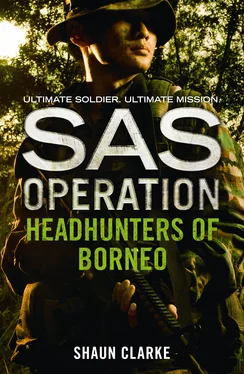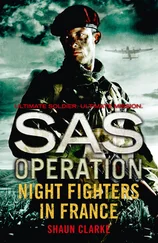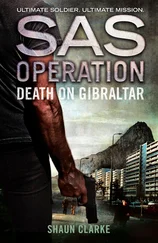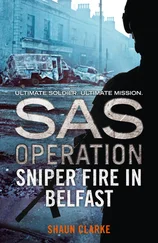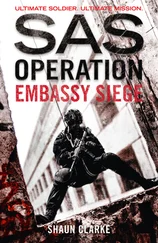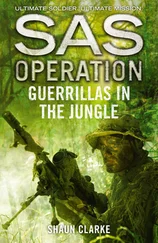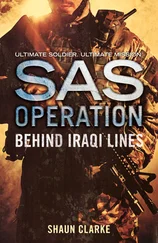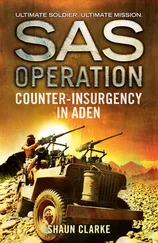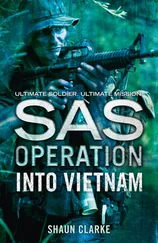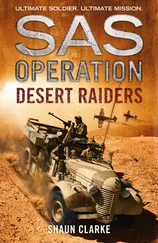These experiences had filled Sanderson with admiration for the skill and courage of the Gurkhas, but left him with mixed feelings about the Border Scouts. Although fond of the tribesmen, who were superb as trackers and good-natured as comrades, he was convinced that training them as paramilitaries was a waste of time. As well as lacking any sense of discipline, they simply could not learn to handle their weapons properly, and were always pointing them accidentally at one another when they were cocked and loaded. It was the corporal’s belief, therefore, that while the Border Scouts were dependable as trackers, they could not be relied on in a fire-fight and might even be a liability.
Sanderson did not know it, but he was about to be proven right in a most forceful manner.
Just before dawn one day in September 1963 a well-equipped company of Indonesian regulars made an attack by river on Long Jawi, emerging from the early morning mist. The Border Scouts manning the GPMG (general-purpose machine-gun) in a protective sangar at the edge of the river, just outside the Security Forces longhouse and the kampong 500 yards east of it, had been drinking tapai , a potent local cider, the night before and were sleeping soundly at their gun when the Indonesian boats slid into the river bank. The Border Scouts were still sleeping it off when the enemy troops, all wearing jungle-green fatigues and carrying Armalite M16 5.56mm and Kalashnikov AK47 7.62mm assault rifles, slipped off the boats, spread out in a broad firing arc and advanced quietly on the longhouse. While they were doing so, more troops disembarked behind them to set up two 7.62mm RPK light machine-guns spaced so as to cover both lines of retreat from the longhouse.
The first of the Border Scouts was awakened by the snapping of twigs on the jungle floor as the Indonesian troops stealthily approached his sangar. Looking up and seeing two of them practically on top of him, he managed to let out a shrill cry of warning before the enemy guns burst into action with a deafening roar and a combined hail of 5.56mm and 7.62mm bullets tore the sangar apart, turning the Scout into a convulsing rag doll of torn clothing, punctured flesh, exposed bone and pouring blood. The guard next to him suffered a similar fate before even lifting his head, expiring in an explosion of swirling thatch, bamboo and dust from the exploding walls of the devastated sangar.
The Security Forces men also inside the longhouse were rudely awakened by the roaring of the guns outside. First out of his hammock was Corporal Sanderson, who almost in one movement rolled off the bed and landed on his feet on the slatted floor. Picking up his self-loading rifle, he rushed to the veranda while the two Police Field Force signallers and a six-man Gurkha team sharing the longhouse were still struggling to get their wits together. Running at the crouch out through the entrance and along the veranda raised high above the ground, he saw that the Border Scouts who had been sleeping around the longhouse were perishing in a hail of bullets from the Indonesian raiders. The latter were spread out across the clearing between the river and the longhouse and firing their weapons on the move.
The combined roaring of the two Indonesian RPK light machine-guns, fired simultaneously to spray the front of the longhouse, filling the air with flying splinters of bamboo and thatch, merely added to the general bedlam of gunfire, ricocheting bullets, shouting and screaming.
Realizing instantly that there was no hope of defending the longhouse, Sanderson fired a couple of bursts from his SLR. He had the satisfaction of seeing a couple of enemy troops fall down, then he bolted around the corner of the longhouse – the veranda ran right around it – as some Gurkhas emerged from inside, bravely firing their SLRs from the hip. More Indonesians were cut down, but the Gurkhas were punched back by a fusillade of enemy gunfire and collapsed with pieces of clothing and bloody flesh flying from their torn bodies. Even as they were dying, their killers were racing up the steps of the longhouse, still firing on the move.
Now at the side of the longhouse, Sanderson saw one of the two Police Field Force signallers frantically working the radio on the communal table while the other shouted instructions in his ear and the remaining Gurkhas fired their weapons at the entrance. In a futile gesture of defiance, he aimed his SLR through the window-shaped opening in the wall and opened fire as the Gurkhas were cut down by a hail of enemy bullets and the first of the Indonesians burst into the room. The slaughtered Gurkhas were still being bowled backwards by the bullets, knocking chairs and tables over, as the Indonesians shot by Sanderson quivered and collapsed. Those behind them, however, either opened fire on the hapless signallers – blowing the radio to bits and turning one of the signallers into a shuddering quiltwork of shredded cloth and spurting blood – or turned towards Sanderson, trying to locate the source of his gunfire.
The second signaller was still tapping the Morse code keys frantically when a parang swept down through striations of sunlight and sliced off his hand. Before he had time to feel the pain and scream, he was shot through the head with a pistol. The man who had shot him was in turn dispatched by a burst from Sanderson, before the SAS corporal turned away from the window – the other Indonesians too were now aiming at him – and vaulted over the bamboo wall of the veranda as bullets whistled past his head.
A former paratrooper, Sanderson landed on his feet, let his legs buckle, rolled over a few times and jumped back up as a group of Indonesians, one carrying a flaming torch, raced around the corner of the longhouse. A short burst from Sanderson’s SLR bowled over a couple of them, including the one carrying the flaming torch. Falling, the man set fire to himself and started screaming dementedly, his feet frantically kicking up loose soil as some of his comrades tried to put out the blaze.
Meanwhile Sanderson had slipped into the jungle and crept around the back of the longhouse, carefully covering his tracks, while the Indonesians who had seen him plunged on ahead without checking, assuming he would flee in a straight line. As they disappeared into the undergrowth, Sanderson kept circling around the back of the building and saw, through the dense undergrowth, that the Indonesians were setting fire to it. Moving further away, still concealing his own tracks and footprints, he headed for the kampong, to where the sounds of shooting and screaming had spread. Through a window in the undergrowth he saw the Indonesians throwing blazing torches onto the verandas of the simple houses while the natives, men, women and children, fled into the jungle. Having seen enough, and aware that there would be no survivors in the longhouse, Sanderson turned away and headed deeper into the jungle.
When he glanced back for the last time, he saw, through the narrowing window in the undergrowth, that the raiders were looting the kampong and destroying it by fire. When they were finished, he knew only too well, they would withdraw in their boats, leaving nothing but smouldering ruins. As there was nothing he could do to prevent it, Sanderson looked back no more.
He moved at the crouch deeper into the jungle, weaving broadly between the trees, stopping every few minutes to concentrate on the silence and allow any enemy troops in the vicinity to give themselves away by their movement. As he had anticipated, the group pursuing him had broken up to fan out, hoping to find him sooner that way.
One of them materialized straight ahead, his presence made known only by the slight shifting of foliage. Not wishing to give his presence away by firing his SLR, and also in need of rations for what he knew would be a long hike, Sanderson very carefully lowered his SLR to the jungle floor, unsheathed his Fairburn-Sykes commando knife, and inched forward to the shifting, whispering foliage. Rising up silently behind where the foliage was moving, he saw the shoulders and back of the head of the enemy soldier in jungle-green fatigues.
Читать дальше
